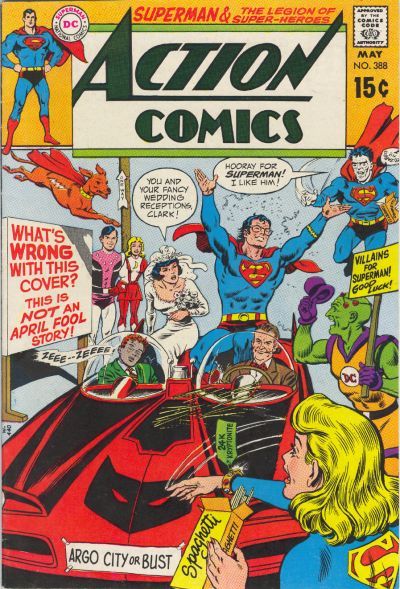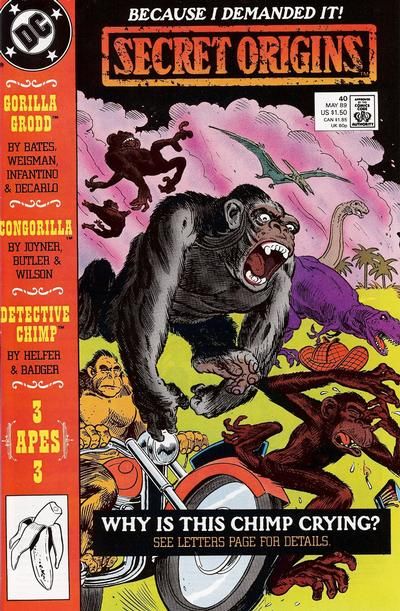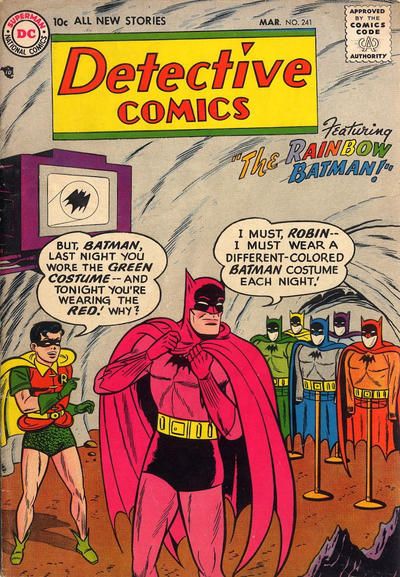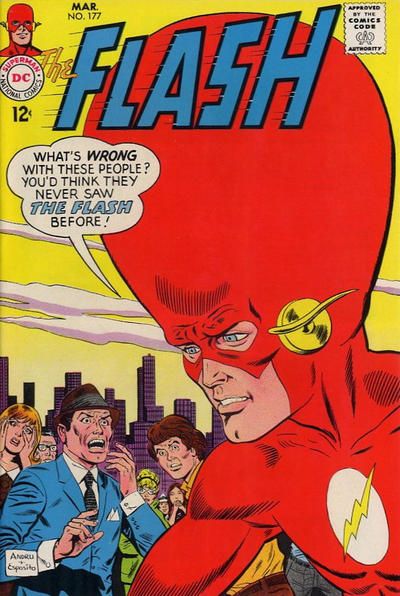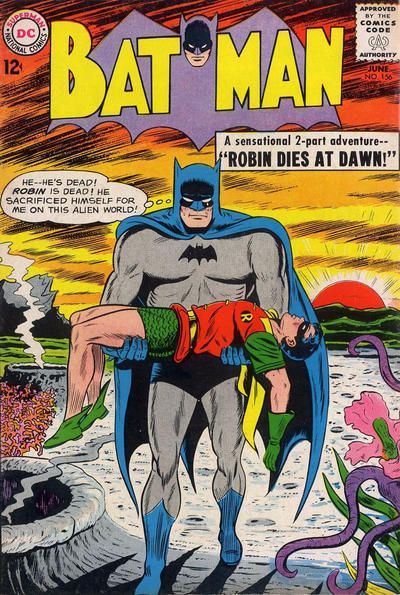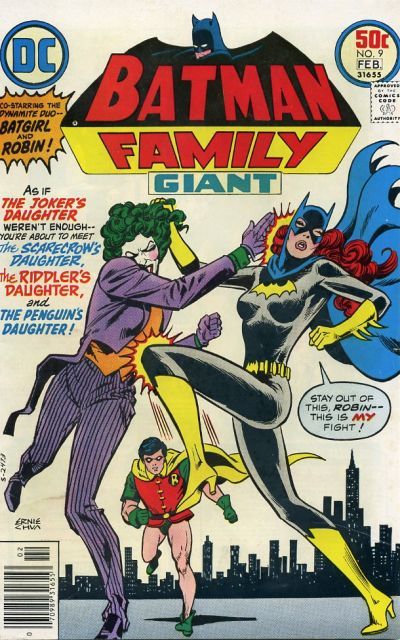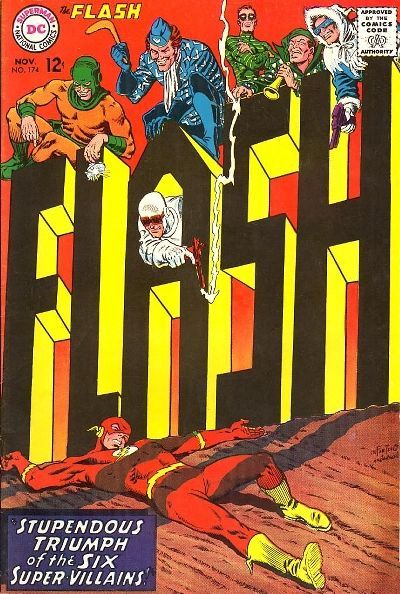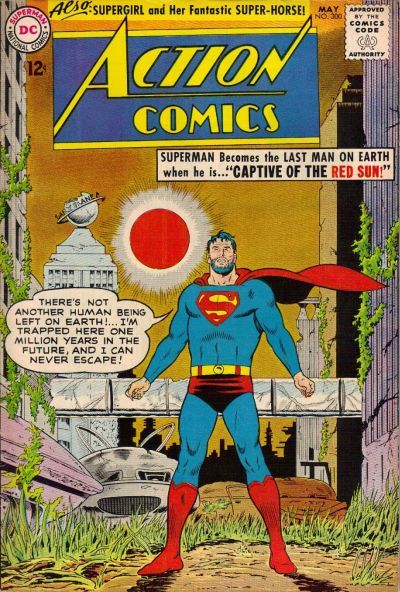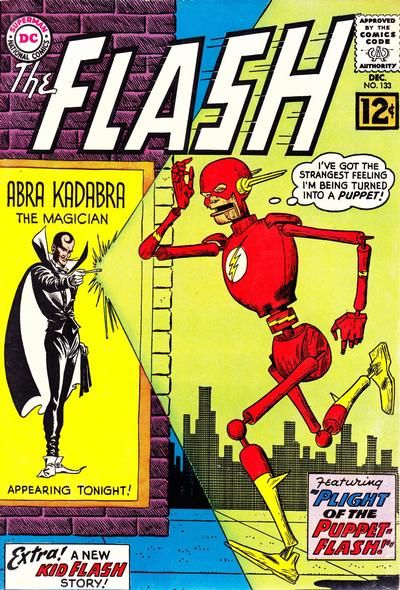When I talked about DC Comics' April solicitations a few weeks back they hadn’t yet been “WTF-Certified.” (Caleb has an excellent roundup of the WTF specifics, and I am unlikely to improve on his observations.) That phrase suggests strongly either that DC is no longer interested in anyone young enough to use “Why The Face” in casual conversation; or, conversely, that polite society now freely tolerates even an abbreviated F-bomb.
Whatever the reasoning, DC wants its April fold-out covers to be SO! SHOCKING! that even the casual browser cannot refuse them. This is not a bad goal in and of itself. Indeed, we might quibble about which quick exclamation best captures such a “must-read” impulse -- OMG! would be too Bieber-feverish, and “wait, what?” is taken -- but as far as real WTF covers go, these are a bit tame.
See, back in the olden days, when print publications actually sold well, a comic’s cover absolutely had to command the consumer’s attention, and thereby encourage him or her to spend a few hard-earned coins (ask your parents, kids) on the new DC titles. The late Julius Schwartz is supposed to have said that a book would sell well if its cover boasted a gorilla, a motorcycle, the color purple and/or a question posed to the reader. (During Mark Waid’s editorship of the 1980s Secret Origins, its 40th issue got all four.) As there was no Internet providing potential readers with constant updates -- and therefore requiring a steady stream of update-friendly factoids -- the cover had to do all the heavy-lifting.
I feel like underlining the first part of that last sentence, because it strikes me as the main reason for April 2013 being WTF Month. Again, perhaps I am seeing things through the fisheye lens of online fandom, but the Internet has made selling comics a lot easier. Not that more comics are sold, mind you, just that the series of tubes offers more opportunities to get the product out there. Besides the monthly solicitations, there are industry-facilitated interviews with comics professionals, industry-supplied previews of upcoming issues, and ubiquitous press releases about who’s doing what. While it is all fodder for various commentators (ahem), much of this informs the purchasing habits of local comics shops, who -- if I understand the direct market accurately -- tend to buy rather conservatively, tailoring their inventory to their customers’ habits. Thus, it may not matter much what’s on the cover of Red Hood #19, because your LCS has already made a fairly educated guess about whether you’re going to buy it. In that respect, WTF Month may be interested only indirectly in Wednesdays-in-April impulse buys. The promotion is just another way to hook readers on plot details, as opposed to selling the merits of each book generally.
And that is where the WTF certifications miss the point. Indeed, this is the kind of thing that really sets off my grumpy old tendencies. If DC really wanted to go all “WTF?!?” on its readers, there’s a pretty solid heritage of wackiness just waiting to be tapped -- even beyond “Why Are These Gorillas Riding Purple Motorcycles?”
A good bit of this tradition comes from the Superman books of the 1950s and ‘60s, which tended to put the Man of Steel in various bizarre predicaments. For example, on the cover of August 1958's Action Comics #243, a lion-headed Superman required Lois Lane to “act out a modern version of ‘Beauty and the Beast.’” Likewise, January 1965's Superman #174 had the Metropolis Marvel rescued a powerless, “delusional” Clark Kent; and May 1979's Superman #335 revealed that Mr. Mxyzptlk had transformed the walls of the Daily Planet building into giant newspapers. The cover of Action #388 (May 1970) asks “what’s wrong” directly, as it sports a disheveled, bespectacled Superman and his bride Lois driving a red Batmobile past a green Mxyzptlk, an orange Krypto and a couple of Legionnaires. All this and I haven’t even mentioned Jimmy Olsen, the poster child for Silver-Age Crazy, whose vast array of body modifications filled an entire collection.
Naturally, this sort of thing extended to other characters as well. There was Rainbow Batman, Bat-Baby, Big-Headed Flash, the Flash puppet, Green Lantern selling power rings, Bob Kanigher’s Wonder Woman, Supergirl’s complicated relationship with Comet the Super-Horse, the Super-Moby Dick of Space, the Joker’s Daughter, the Super-Sons and so on. At one point or another, well into the 1970s, each of these little audacities (among many others) had its time to shine.
This is not to say that everything was trippy and bright. Some of the era’s most memorable covers were depressing and/or disturbing, including “Robin Dies At Dawn,” Superman stranded under a red sun on a distant-future Earth, the Rogues gathered around a defeated Flash, and Green Arrow blowing apart Green Lantern’s power battery. Still, it wasn’t an all-or-nothing choice between gloom and cheer, and it shows that occasionally, DC knew how to have fun with its super-folks.
While the New 52 hasn’t been a total downer -- see, e.g., the Young Romance special; and compare the recent cancellations of Tiny Titans and Superman Family Adventures -- it’s probably safe to say that “happy” covers are in much shorter supply. (To be fair, the current default expression may well be “determined.”) By now it is surely trite to note the emphasis on adult situations. Nevertheless, despite WTF Month happening throughout April, DC has apparently decided that silly doesn’t sell.
That’s too bad, because DC could use some foolishness. For too long the company seems to have been convinced the only way to attract and/or retain a decent audience is to emphasize just how Serious and Important are the situations visited upon its characters. Certainly some characters are hardwired for “serious,” and some interpretations (like the New 52 Supergirl) can survive a little lack of levity. However, the relentless pursuit of gravitas can also be wearying, even self-defeating. The most dramatic status-quo change might well be met with some combination of outrage and the jaded response that it’ll all be retconned away eventually. If to do nothing is to risk being called “boring,” though, what alternative is there?
I know you have been paying attention for the past 900-odd words, so I trust the alternative is obvious. Regardless, I can only lament the loss of an April with no humor, where instead the New 52 titles each promise some cataclysmic event behind the added value of those foldout covers. Maybe in April 2014, WTF Month Take Two will feature 52 standalone issues, each trying to sell potential readers on the merits of its characters, not the machinations of its plot. Heck, I might even buy the hypothetical thousand-page hardcover collecting such an effort. It won’t happen anytime soon, though, because DC seems so deathly afraid people will laugh at it that it’s unwilling to try to get people to laugh with it. (And indeed, some commentators are laughing at it regardless.)
The direct market culture will not change overnight, but it can change. It can encourage comics to be inviting, not impenetrable. It can try to reward treating individual issues as individuals, not as chunks of larger stories. For that matter, it can emphasize the unique qualities of characters and series, in order both to justify different takes on the same basic characters (personally, I'm curious as to why we still need Red Lanterns) and to demonstrate the New 52's various diversities.
Ironically, the covers of September's Zero issues were deliberately generic, with eye-catching white backgrounds, but their contents sought to sell their book's distinct charms. Compare that to April's array of stabbings, grimaces, and general mayhem. The best cover art is worthless if the reader doesn't care about what's inside.
The frustrating thing is, even the Bat-books have it in them to lighten up, as last week’s Batman & Robin Annual (by Peter J. Tomasi and Ardian Syaf) demonstrated. If Damian Wayne -- Damian Wayne! -- can take his dad on a European scavenger hunt, with no shocks beyond Damian’s potential for actual human feelings, then surely the rest of the superhero line can follow suit. Superman and Wonder Woman stand for hope and peace, the Flash represents the limitless freedom of speed, Aquaman, Animal Man and Swamp Thing are guardians of the natural world, and Green Lantern personifies courage. These characters are not necessarily doomed to be tortured by their long twilight struggles. Neither, for all their weighty aspirations, will they ever be taken completely seriously. It will not kill them (or their publisher) to remind readers of those things. It may even bring in some new ones.
+++++++++++++++++
P.S. Here are some of the covers referenced above. Thanks as always to the Grand Comics Database.


